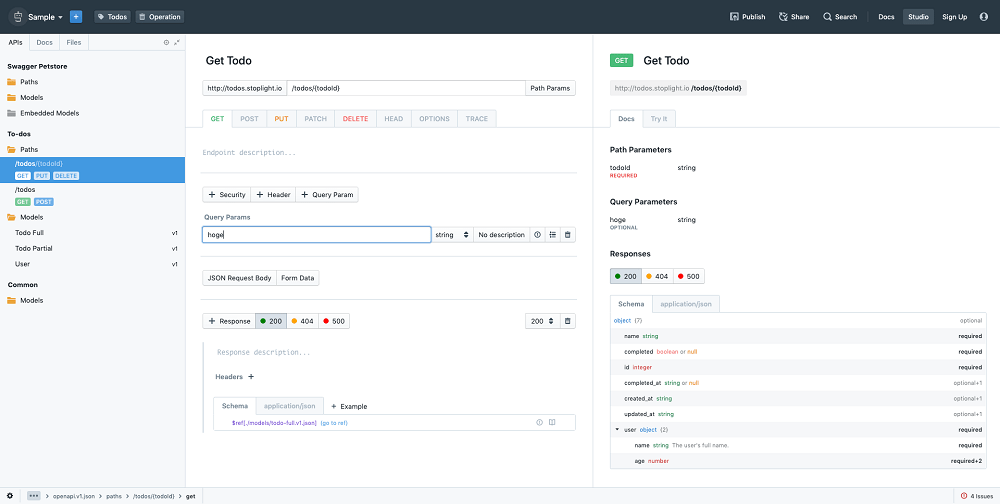

The editor’s toolbar also contains the following items: Sync Management You can hide or show individual panels by using the buttons on the left.

You can search and filter by paths, HTTP verbs, and model names, and quickly navigate to the corresponding place in the YAML code. The Navigation panel on the left shows a list of operations and models defined in your API. Here you can also make API calls directly in your browser. The API docs are updated automatically as you type, helping you visualize the API you are creating. Interactive API docs are generated from your API definition and are based on Swagger UI. The editor autosaves drafts every 2 minutes, and you can also save your progress manually at any time. You can switch between the Code Editor and Visual Editor by using the buttons in the sidebar on the left. Visual Editor lets you edit API metadata and operation metadata without having to understand the OpenAPI syntax. The editor supports autocompletion for OpenAPI keywords, syntax highlighting, search and replace operations, code folding and keyboard shortcuts. The editor has two modes:Ĭode Editor lets you edit the YAML code of your API definition. I was able to start the swagger editor by building the swagger source code as described below: git clone īut I would still like to see if it's possible to run it via the http-server method only.SwaggerHub OpenAPI editor has a split view with the editor on the left and interactive API documentation on the right. (KHTML, like Gecko) Chrome/.69 Safari/537.36"Įrror : Cannot set headers after they are sentĪt tHeader (_http_outgoing.js:470:11) Serve GZIP Files: false Serve Brotli Files: false Default File Timeout: 120 seconds Directory Listings: visible AutoIndex: visible Http-server settings: CORS: disabled Cache: 3600 seconds Connection Starting up http-server, serving swagger-editor However, both on Ubuntu and Windows, I'm unable to access the server after it starts. As per the documentation here for installing swagger-editor one must simply run these 4 commands: npm install -g http-server


 0 kommentar(er)
0 kommentar(er)
